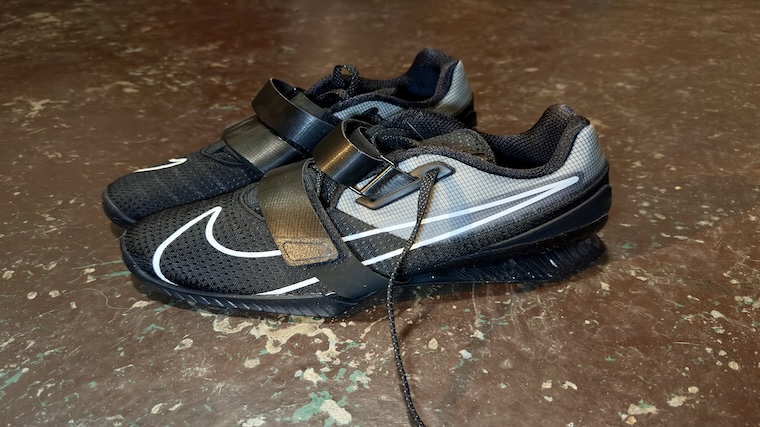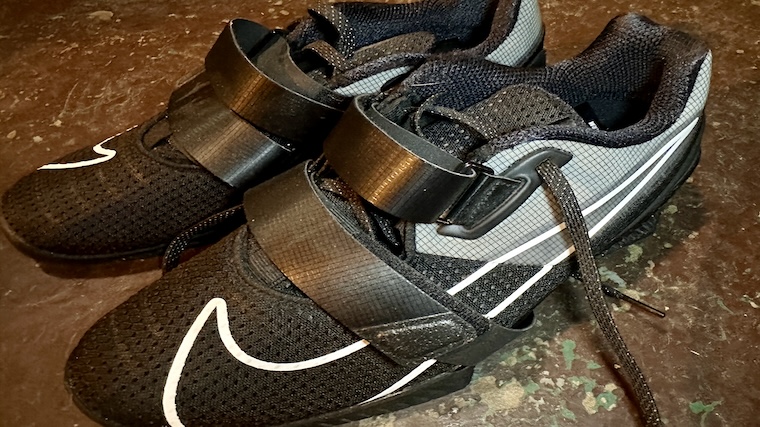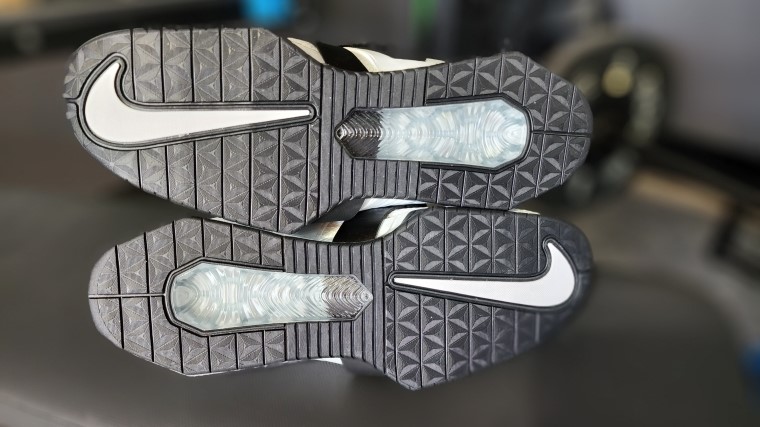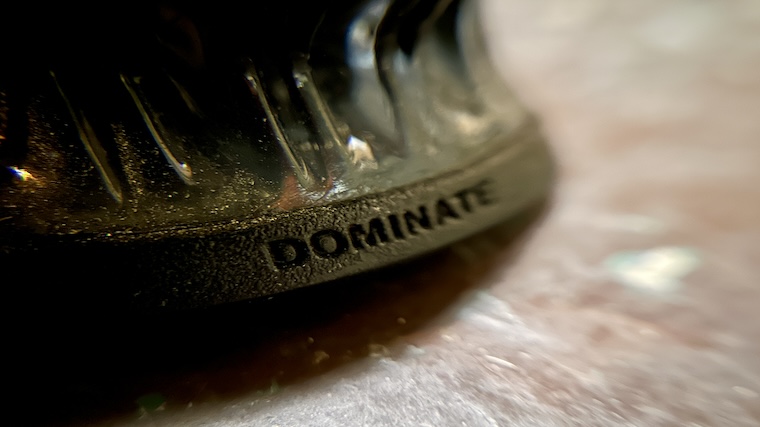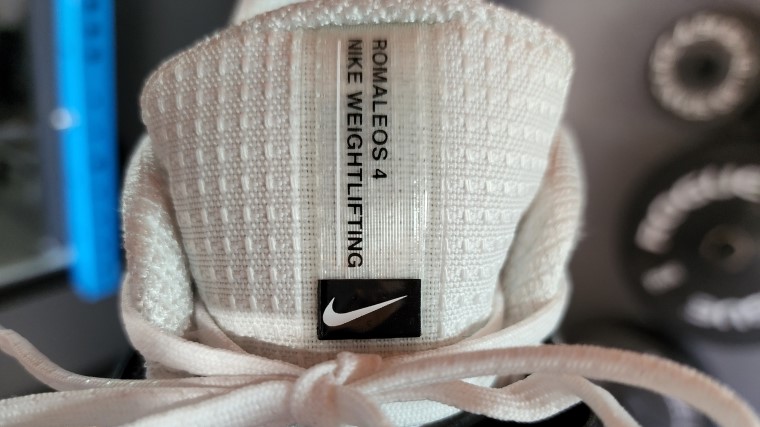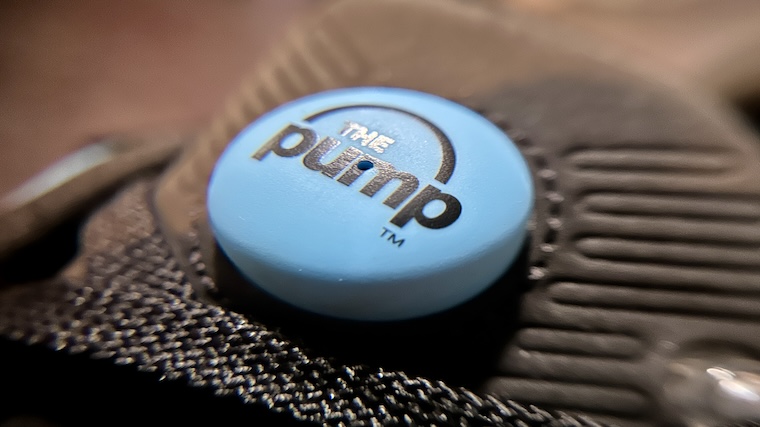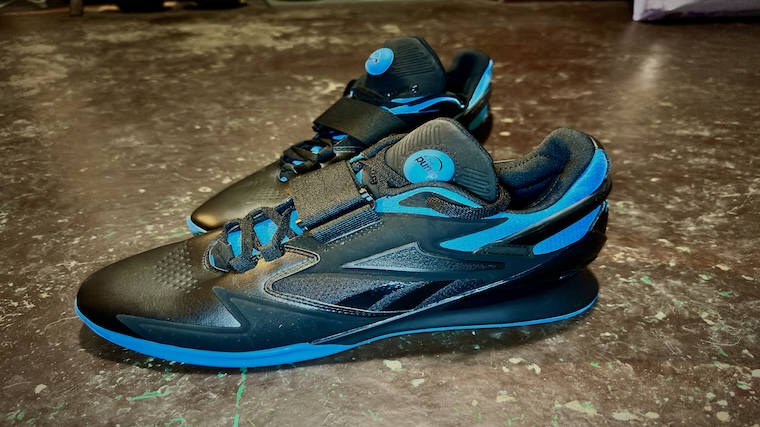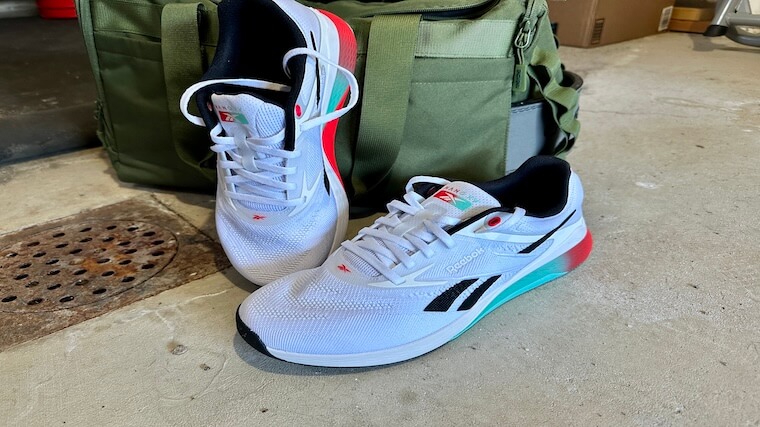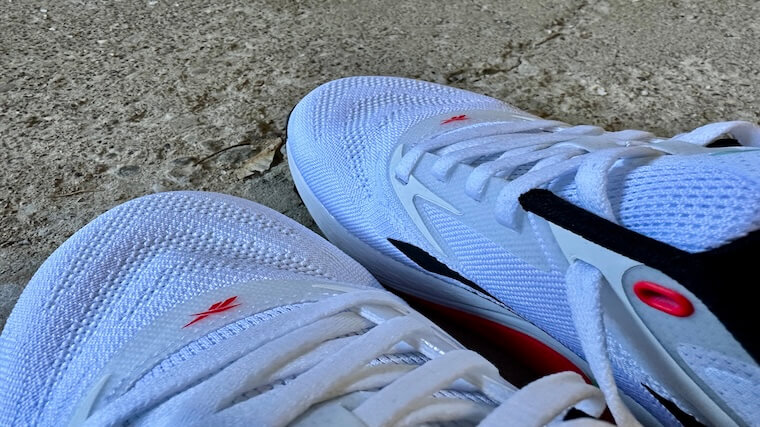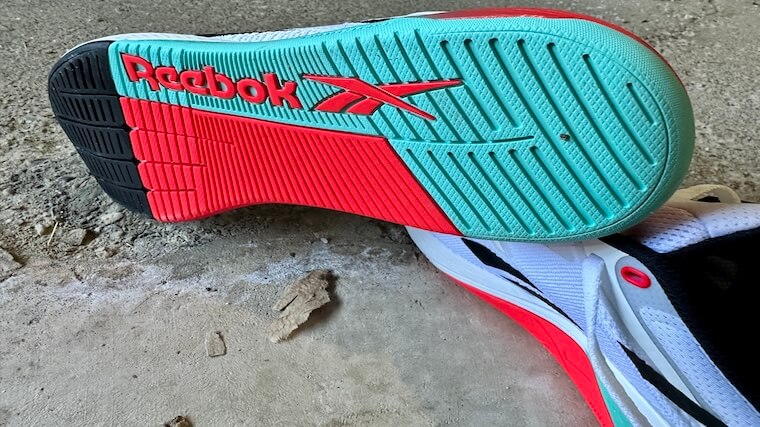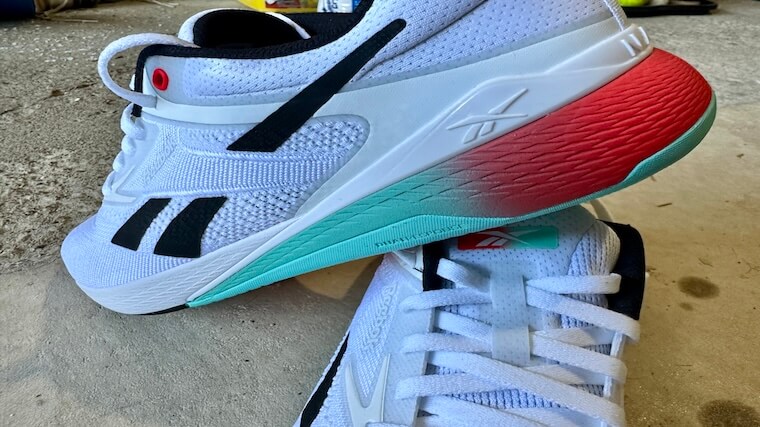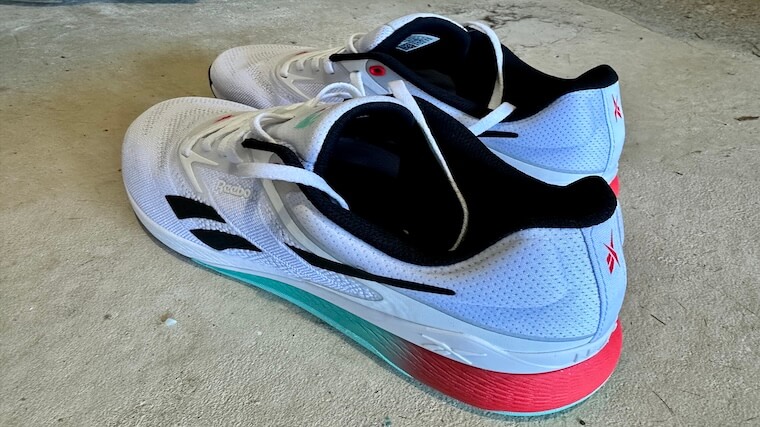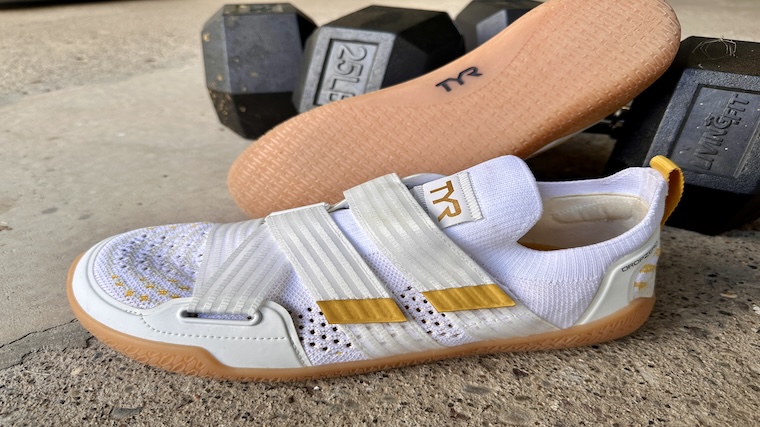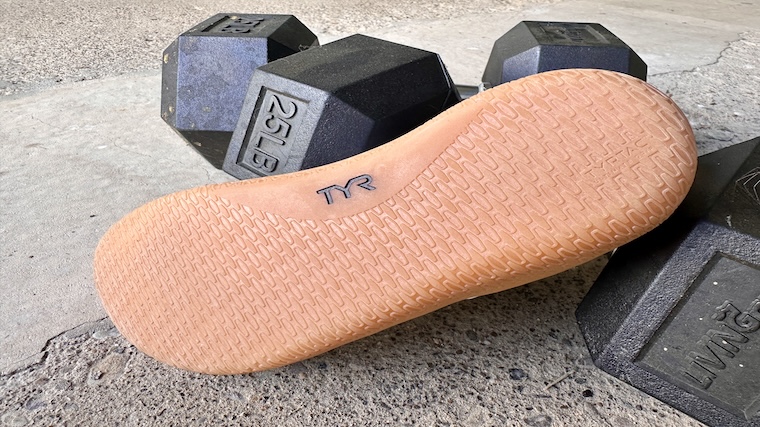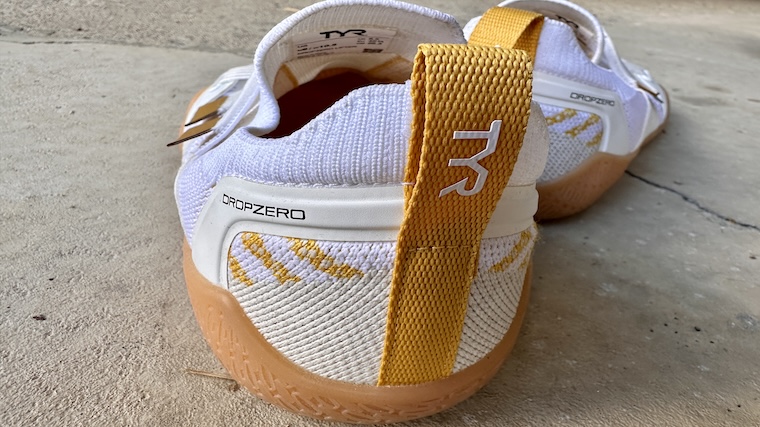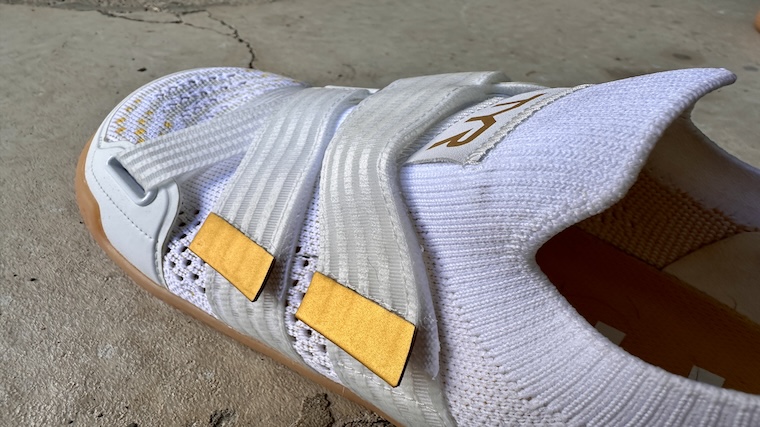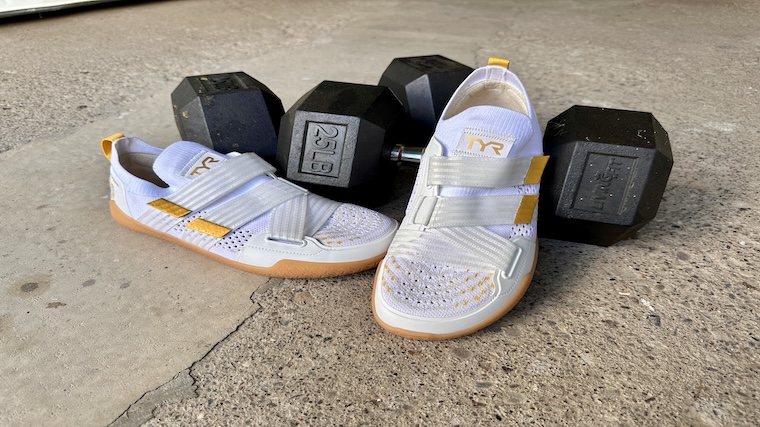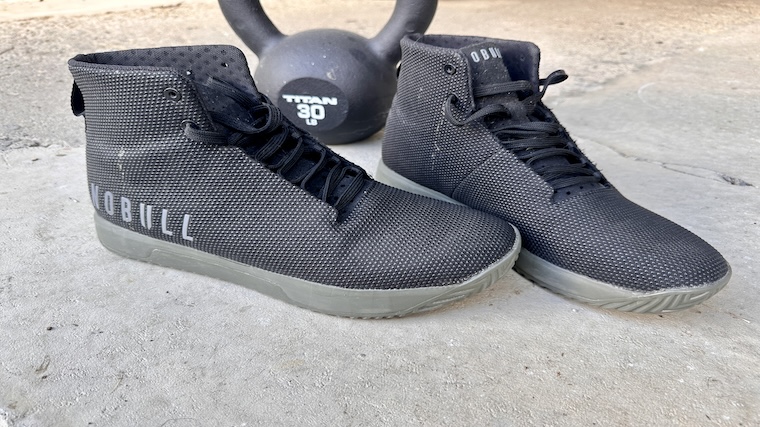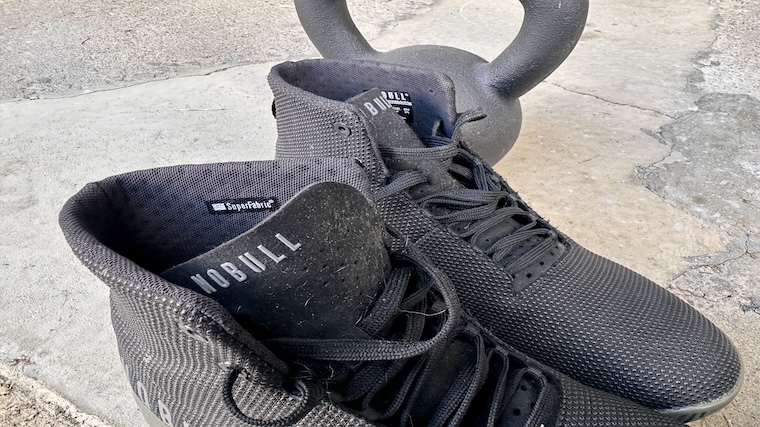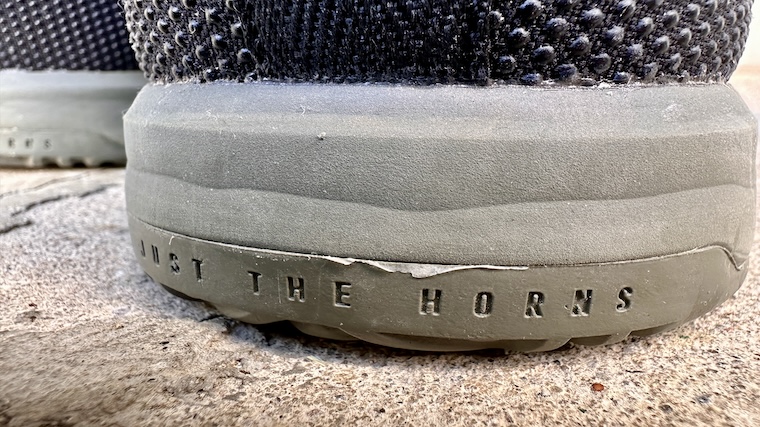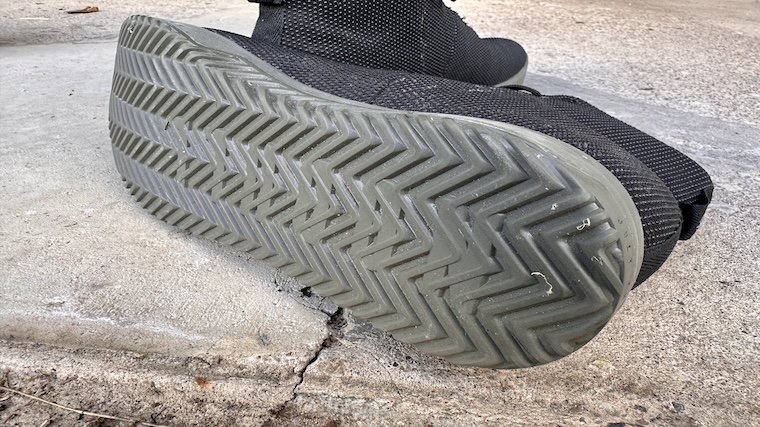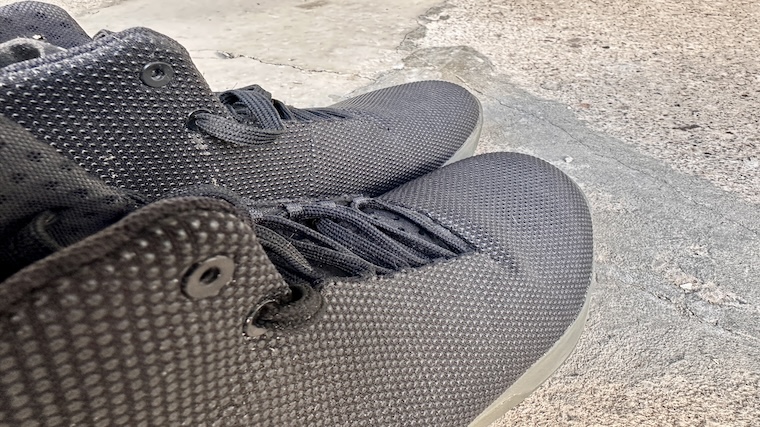While a high-quality pair of the best cross-training shoes are plenty capable for a range of workouts, some exercises and training disciplines can call for specific footwear. “Weightlifting shoes are a specialized design to help facilitate improved receiving positions under a barbell and better ankle dorsiflexion for improved body positioning in a squat,” states Amanda Capritto, CPT, CES, CNC, CF-L1, CSNC. (1) The best weightlifting shoes offer this elevated heel and improved stance with comfortable fits, appealing colorways, and impeccable durability for many heavy lifts ahead.
Naturally, the best shoes for your particular program may differ from someone else’s preferred style. You’ll also need to consider factors like sizing, breathability, and (of course) price when choosing a pair of your own. To help you elevate your shoe closet without headache, we’ve tested over 20 popular weightlifting shoe profiles from some of the category’s most noteworthy brands. With guidance from our equipment testing methodology, we rated each footwear silhouette in key categories including:
- Heel Height: What is the drop difference between the heel and forefoot? How does this angle influence our range of motion and in-training comfort during specific lifts?
- Closure System: Do the shoes employ a standard lacing lattice for tight fitment, or are other components used to help create that locked-in feel?
- Materials: Is the upper constructed from a durable, breathable textile that can withstand regular wear and tear? Is the heel design rigid enough to support heavy weight totals without compressing?
- Available Colorways: Do the shoes pass an eye test and feature an appealing look? Are there multiple colorways available to align with different personal tastes?
- Value: Is the price tag justified in reference to the weightlifting shoe’s build quality and performance?
The BarBend team has helped connect over 1.2 million athletes with high-quality strength and conditioning equipment over the years — training shoes, included. If you’re looking to upgrade your gym bag with a top-notch pair of weightlifting shoes, we’re confident that the following details can help you put your best foot forward when it comes time to load up the barbell for another set. Let’s lace up and get into our findings.
The 9 Best Weightlifting Shoes of 2025
- Best Weightlifting Shoes Overall: Nike Romaleos 4
- Most Stylish Weightlifting Shoes: Reebok Legacy Lifter III
- Best Weightlifting Shoes for Olympic Weightlifting: TYR TYRFORCE Elite Carbon
- Best Weightlifting Shoes for Wide Feet: Nike Salvaleos
- Best Weightlifting Shoes for Cross-Training: Reebok Nano X5
- Best Weightlifting Shoes for Beginners: Adidas Powerlift 5
- Best Weightlifting Shoes for Powerlifting: TYR DZ-1 DropZero Barefoot Trainer
- Best Budget Weightlifting Shoes: KCross Weightlifting Shoes
- Best Weightlifting Shoes for CrossFit: NOBULL Outwork Edge
Best Overall Weightlifting Shoes: Nike Romaleos 4
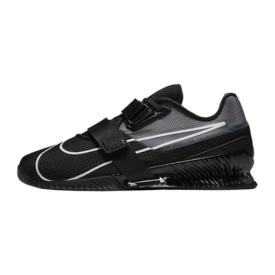
The Nike Romaleos 4 are about as pure of a weightlifting shoe as you can get. They’re designed with stability and performance in mind with dual leather lockdown straps and a unique patterned rubber sole for a better platform feel and stability.
Specs
- Price: $200
- Weight: 20.14oz
- Heel-to-Toe Drop: 20mm
- Lockdown Mechanism: Lace and dual strap
- Available Sizes: 5.5-14
- Colors Available: 5
Read our full Nike Romaleos 4 Weightlifting Shoe Review.
Most Stylish Weightlifting Shoes: Reebok Legacy Lifter III
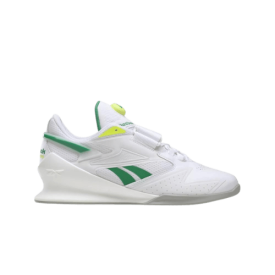
Resembling a high-top sneaker you’d expect to see on the hardwood basketball courts of yesteryear, these Reebok lifters employ three lockdown systems for a premier fit for each lift. You get your standard shoelaces along with a singular midfoot strap, but the integrated Pump technology is also placed across the profile for a pneumatic sense of fine-tuned fitment.
Specs
- Price: $219.99
- Weight: 22.12oz
- Heel-to-Toe Drop: 22mm
- Lockdown Mechanism: Lace, single strap, and Pump technology
- Available Sizes: 6.5-14
- Colors Available: 6
Read our full Reebok Legacy Lifters Review.
Best Weightlifting Shoes for Olympic Weightlifting: TYR TYRFORCE Elite Carbon
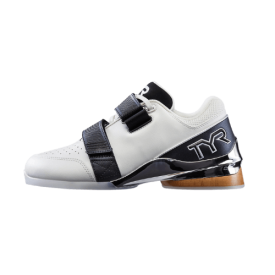
With a hefty heel-to-toe drop of 25.4 millimeters and a heavy build for underfoot stability, the TYR TYRFORCE Elite Carbons can be an excellent choice for Olympic weightlifting enthusiasts. A durable leather upper also enhances this sneaker’s longevity — a major plus considering the expensive price tag.
Specs
- Price: $350
- Weight: 22.9oz
- Heel-to-Toe Drop: 25.4mm
- Lockdown Mechanism: Lace and dual strap
- Available Sizes: 5-11.5
- Colors Available: 4
Best Weightlifting Shoes for Wide Feet: Nike Savaleos
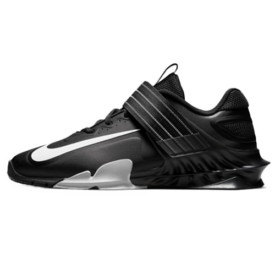
The Nike Savaleos bridge the gap between trainers and weightlifting shoes very well. They offer support and stability while still being flexible enough to support the rest of your workout. Nike made these shoes comfortable and functional for all your lifting needs.
Specs
- Price: $125
- Weight: 14.82oz
- Heel-to-Toe Drop: 15mm
- Lockdown Mechanism: Lace and single strap
- Available Sizes: 3.5-18
- Colors Available: 1
Read our full Nike Savaleos Weightlifting Shoe Review.
Best Weightlifting Shoes for Cross-Training: Reebok Nano X5
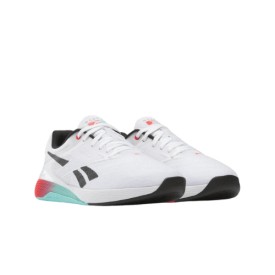
The latest Nano iteration features a new DUALRESPONSE EVA foam midsole that’s effective for dynamic strength training and moderate cardio sessions alike. We also appreciate the FLEXWEAVE upper offering ample breathability for when your sessions turn up the intensity.
Specs
- Price: Starting at $140
- Weight: 12oz
- Heel-to-Toe Drop: 7mm
- Lockdown Mechanism: Lace
- Available Sizes: 4-14
- Colors Available: 8
Best Weightlifting Shoes for Beginners: Adidas Powerlift 5
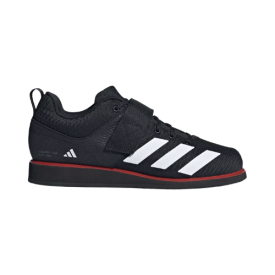
The Adidas Powerlift 5s feature a beginner-friendly 15-millimeter heel height that can serve as a nice transition into dedicated weightlifting shoes. A durable textile upper, while less breathable than other materials, adds to the profile with extra stability and resiliency against excessive wear and tear.
Specs
- Price: $130
- Weight: Not listed online
- Heel-to-Toe Drop: 15mm
- Lockdown Mechanism: Lace and single strap
- Available Sizes: 4-16
- Colors Available: 4
Best Weightlifting Shoes for Powerlifting: TYR DZ-1 DropZero Barefoot Trainer
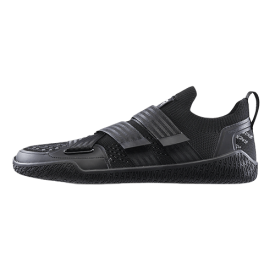
Sleek and minimalist, the TYR DZ-1 DropZero Barefoot Trainers are the latest footwear offerings from the growing brand. Featuring easy-to-use Adjustable Stability Straps across the top of the foot, along with a wider anatomical toe box, these barefoot-style training shoes can be great for athletes wanting maximum ground contact for those heavy deadlift days or squat sessions.
Specs
- Price: $150
- Weight: 9.85oz
- Heel-to-Toe Drop: 0mm
- Lockdown Mechanism: Dual strap
- Available Sizes: 4.5-14
- Colors Available: 4
Best Budget Weightlifting Shoes: KCross Weightlifting Shoes
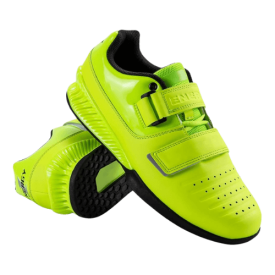
With a respectable 20-millimeter heel-to-toe drop and rugged nylon upper, the KCross Weightlifting Shoes can be a worthwhile pick for athletes wanting specialized footwear without a specialized price tag. At under $100, they’re by far one of the more affordable silhouettes when it comes to the weightlifting shoe category.
Specs
- Price: $69.99
- Weight: Not listed online
- Heel-to-Toe Drop: 20mm
- Lockdown Mechanism: lace and dual strap
- Available Sizes: 6.5-12
- Colors Available: 4
Best Weightlifting Shoes for CrossFit: NOBULL Outwork Edge
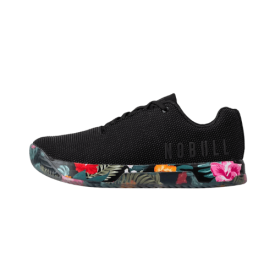
The NOBULL Outwork Edge Series of cross-training shoes features low-top and high-top silhouettes in almost too many colorways to count. A 4-millimeter stack height and improved herringbone-patterned outsole make these a high-quality option for CrossFit enthusiasts and daily gym-goers.
Specs
- Price: Starting at $149
- Weight: 13.13oz
- Heel-to-Toe Drop: 4mm
- Lockdown Mechanism: Lace
- Available Sizes: 7-16
- Colors Available: 10
How We Tested and Chose the Best Weightlifting Shoes
The BarBend team is made up of competitive athletes, certified personal trainers, and lifelong fitness enthusiasts. To make our list of the best weightlifting shoes, we got hands-on with 12 different silhouettes from top brands, using a multi-point methodology to rate each profile on a scale of 1 (lowest) to 5 (highest) to determine our top picks. Below are some of the categories and components we looked at to make our list.
- Heel Height and Elevation: The height of a weightlifting shoe’s heel can greatly influence the range of motion across your hip, knee, and ankle joints during barbell squats and other exercises. (2) As such, finding the ideal setup for your comfort and performance levels is key when selecting a pair of lifters for your gym bag.
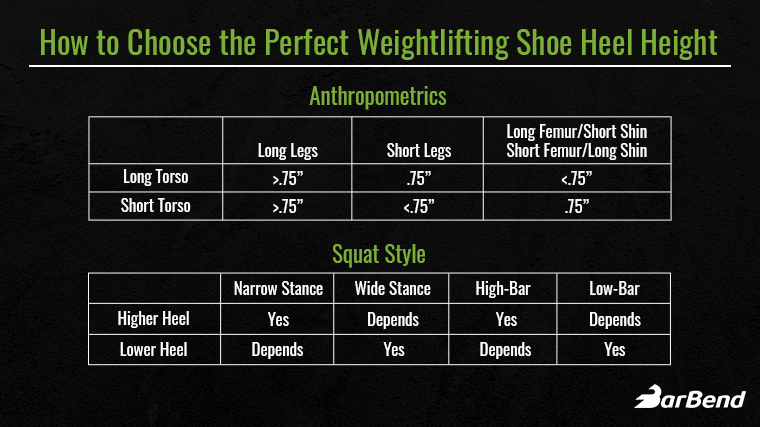
- Lacing and Strapping: The picks in this round-up include silhouettes boasting a variety of lacing structures, with some employing just a simple shoelace lattice and others adding a single- or dual-strap system for better lockdown.
- Type of Heel: Unlike some of the best running shoes, you’ll want a sturdier heel that doesn’t showcase a cozy sense of compression when deciding between weightlifting shoes. When it comes to high-quality weightlifting shoes, there are a handful of materials that can be employed for a rock-solid foundation.
| EVA Heel | Lightweight, somewhat compressible or maneuverable, very durable |
| TPU Heel | Lightweight, resistant to compression and abrasion, durable |
| Stacked Leather Heel | Throwback look, platform feedback, somewhat compressible |
| Wood Heel | Stable, old-school appearance, little to no compression, platform feedback |
- Materials: Something to be aware of are the trade-offs that come with certain materials. Leather looks great, but does not breathe as well as fabrics such as textile or mesh. Conversely, using a ton of breathable material can make shoes lightweight with great airflow, but may impact their durability and stability.
- Design: Design is something that is highly subjective and we try our best not to put too much emphasis on it, but sometimes there are shoes we can all agree just look good — and we’ll point that out.
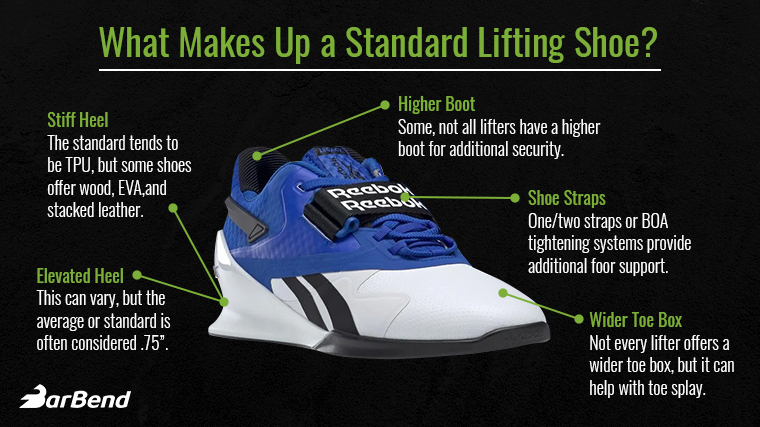
If you want to learn more about what to look for in a weight lifting shoe, check out our ultimate guide to lifting shoes.
Benefits of Weightlifting Shoes
According to Amanda Capritto, our expert reviewer, the best lifting shoes can be beneficial for a number of athletes, especially those focusing on Olympic lifts and the back squat within their given fitness regimens. From improved ankle dorsiflexion, better underfoot stability, and more, below are just a few of our favorite benefits associated with this specialized footwear category.
- Comfortable Squatting: Training in weightlifting shoes can help promote a wider range of ankle dorsiflexion, as well as a more upright torso positioning. (3)(4) Having greater ankle mobility throughout your squat can be beneficial when trying to avoid excessive forward lean, which, in turn, can help alleviate unwanted stress across your lower back.
- Improved Stability: The stability of your footwear can be vital when it comes to moving heavy weights in a dynamic fashion like you’d experience in Olympic exercises like the snatch and clean and jerk.
- Activity-Specific Gear: When you own a pair of weightlifting shoes, you’re only using them for specific movements in the gym. Having these tools at your disposal can actually serve as a safety net for your other workout footwear in that you aren’t using and abusing your go-to kicks, allowing them to recover after a typical session. It’s the same notion behind rotating your running shoes — less wear and tear on a single pair can make every asset last longer.
How to Choose the Best Weightlifting Shoes
When making any purchase, especially a larger one like a new pair of weightlifting shoes, it’s a good idea to consider the options and take inventory of what you’d like to get out of your new equipment. Just like other types of shoes — from the best recovery shoes to running shoes, trail shoes, and more — there are a lot of options on the market and a lot of factors to think about when choosing your next or first pair of weightlifting shoes. Below are some factors we recommend pondering over before adding a high-quality pair of training kicks to your cart.
Heel Height
Amanda Capritto, our expert reviewer, states, “A good place to start is the heel-to-toe drop. The higher the drop, the more assistance the shoes will provide in terms of ankle dorsiflexion, squat depth, and spinal positioning throughout the lift.”
Additionally, Capritto notes that weightlifting shoes with a lower heel-to-toe drop may be less helpful in heavy dynamic lifts, but can still prove their worth in more versatile workout regimens like CrossFit or general strength training. “You’re not likely to see Olympic weightlifters approaching the platform in a pair of Nike Metcons, but they can be vital pieces of a well-rounded ensemble, especially if you partake in different training disciplines,” she adds.
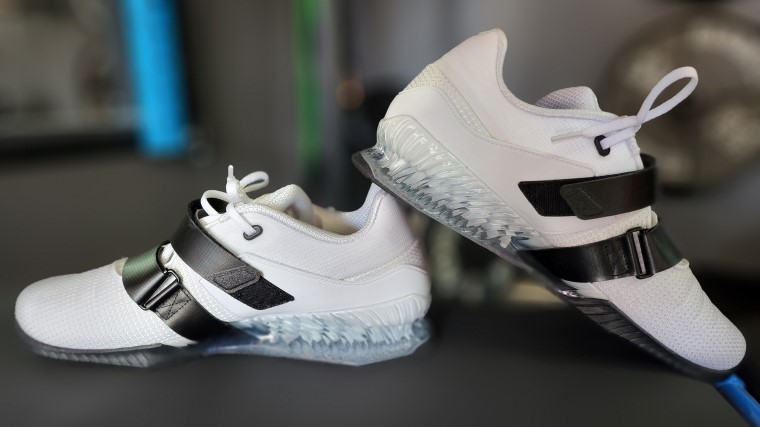
In the end, however, you should consider your personal preference and whether a high heel will be a beneficial support system for your lifting form, or a nagging irritant that feels awkward underfoot. Additionally, you can always ease into this experience by initially opting for a lower-heeled design and working your way up to the 20-millimeter profiles often associated with the upper echelon of this footwear category.
Lockdown Mechanism
Weightlifting shoes should be as stable as possible, and that cannot be accomplished without a proper lockdown sensation over the top of the foot. On average, you can expect a weightlifting shoe to feature a typical shoelace structure, although more and more profiles are also including a hook-and-loop midfoot strap for better security. Some can even boast multiple straps along the medial and lateral sides of the foot, helping ensure a compact, snug lockdown with little room for interior movement.
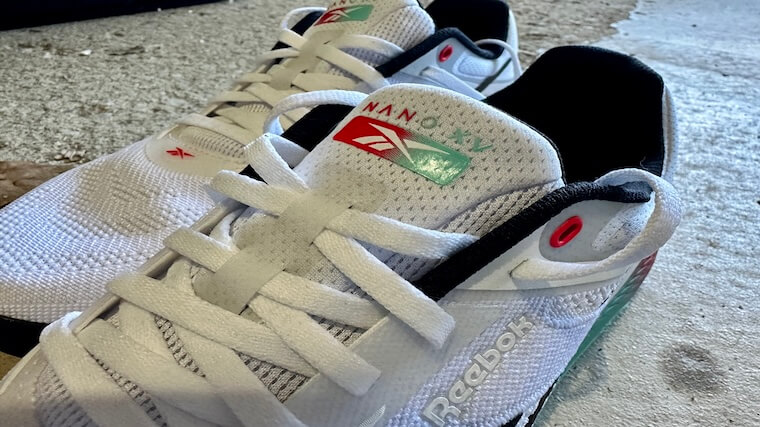
While we’ll always recommend more lockdown systems over less, designs can become convoluted at times, leading to unwanted pressure points that can compromise the overall comfort of the lifting shoe. “Remember, comfort is always key,” Capritto adds. Think about your personal comfort preferences and desired lockdown aesthetic.
Toe Box Design
To accentuate this sense of stability and lockdown, you’ll often find that weightlifting shoes feature a narrower, more tapered toe box design than other training sneakers. This is to ensure that there’s as little room as possible for your foot to move as you work through dynamic movements like the snatch and clean and jerk.
However, while there are perks to this tighter design, it can be perceived as uncomfortable for some, especially those with wider feet. Think about the shape of your feet and look for a weightlifting shoe that can accommodate your personal footprint best.
Upper Construction
Your weightlifting shoe’s upper can greatly influence your in-gym experience. If it’s too flexible, you can run the risk of shifting your foot placement within the shoe with each aggressive movement. If it’s too rigid, you may be setting yourself up for hot spots and a lack of breathability. The best weightlifting shoes bring together both worlds for a fitment that’s stable, comfortable, durable, and (above all else) looks damn good in a gym setting.
How Much Do Weightlifting Shoes Cost?
Given their more specialized makeup, you can expect to pay a little more for weightlifting or squatting shoes than you would your go-to cross-trainers. On average, though, you can expect to pay roughly $170 for a high-quality pair of lifting shoes. Below you’ll find a breakdown of all the weightlifting shoes included in this guide, as well as their respective costs.
| Best Weightlifting Shoes Overall | Nike Romaleos 4 | $200 |
| Most Stylish Weightlifting Shoes | Reebok Legacy Lifter III | $219.99 |
| Best Weightlifting Shoes for Olympic Weightlifting | TYR TYRFORCE Elite Carbon | $350 |
| Best Weightlifting Shoes for Wide Feet | Nike Salvaleos | $125 |
| Best Weightlifting Shoes for Cross-Training | Reebok Nano X5 | Starting at $140 |
| Best Weightlifting Shoes for Beginners | Adidas Powerlift 5 | $130 |
| Best Weightlifting Shoes for Powerlifting | TYR DZ-1 DropZero Barefoot Trainer | $150 |
| Best Budget Weightlifting Shoes | KCross Weightlifting Shoes | $69.99 |
| Best Weightlifting Shoes for CrossFit | NOBULL Outwork Edge | Starting at $149 |
Best Weightlifting Shoes FAQs
What to look for in weightlifting shoes?
Speaking generally, your weightlifting shoes should offer a heightened heel-to-toe drop that’s more aggressive than your regular training sneakers, with many profiles offering heel heights around 20 millimeters. Additionally, a stable design with a traction-focused outsole can be great for keeping setups sturdy throughout your dynamic movements. Above all else, though, your personal comfort should be a driving factor when deciding between lifters. After all, what’s the sense in training in sneakers that you feel displeased with every time you lace them up?
What are the best weightlifting shoes?
Weightlifting shoe technology is always changing and updating. While some people prefer the classics, others like the latest and greatest. The best weightlifting shoe for you will depend on the heel height, price range, and shoe width you’re interested in. That said, our favorite weightlifting shoes right now are the Nike Romaleos 4s. They’re extremely solid and stable, with a 20-millimeter heel height that offers great support. Plus, we think they look really cool.
How should weightlifting shoes fit?
Your lifting shoes should feel pretty secure and stable. If you’re doing a heavy back squat or snatch, the last thing you want is your foot moving around inside your shoe. So, while you don’t want your toes being overly pinched, these should feel a little tighter than, say, your running sneakers.
Do weightlifting shoes really help?
Weightlifting shoes can help increase your stability and give you some more range of motion. As a result, they can help improve your weightlifting sessions.
References
- Legg, H. S., Glaister, M., Cleather, D. J., & Goodwin, J. E. (2016). The effect of weightlifting shoes on the kinetics and kinematics of the back squat. Journal of Sports Sciences, 35(5), 508–515. https://pubmed.ncbi.nlm.nih.gov/27096286/
- Lu, Z., Li, X., Xuan, R., Song, Y., Bíró, I., Liang, M., & Gu, Y. (2022). Effect of heel lift insoles on lower extremity muscle activation and joint work during barbell squats. Bioengineering, 9(7), 301. https://www.ncbi.nlm.nih.gov/pmc/articles/PMC9312299/
- Sato, K., Fortenbaugh, D., & Hydock, D. S. (2012). Kinematic changes using weightlifting shoes on barbell back squat. Journal of Strength and Conditioning Research, 26(1), 28–33. https://pubmed.ncbi.nlm.nih.gov/22201687/
- Lee, S.-P., Gillis, C. B., Ibarra, J. J., Oldroyd, D. F., & Zane, R. S. (2019). Heel-raised foot posture does not affect trunk and lower extremity biomechanics during a barbell back squat in recreational weight lifters. Journal of Strength and Conditioning Research, 33(3), 606–614. https://pubmed.ncbi.nlm.nih.gov/30789547/
